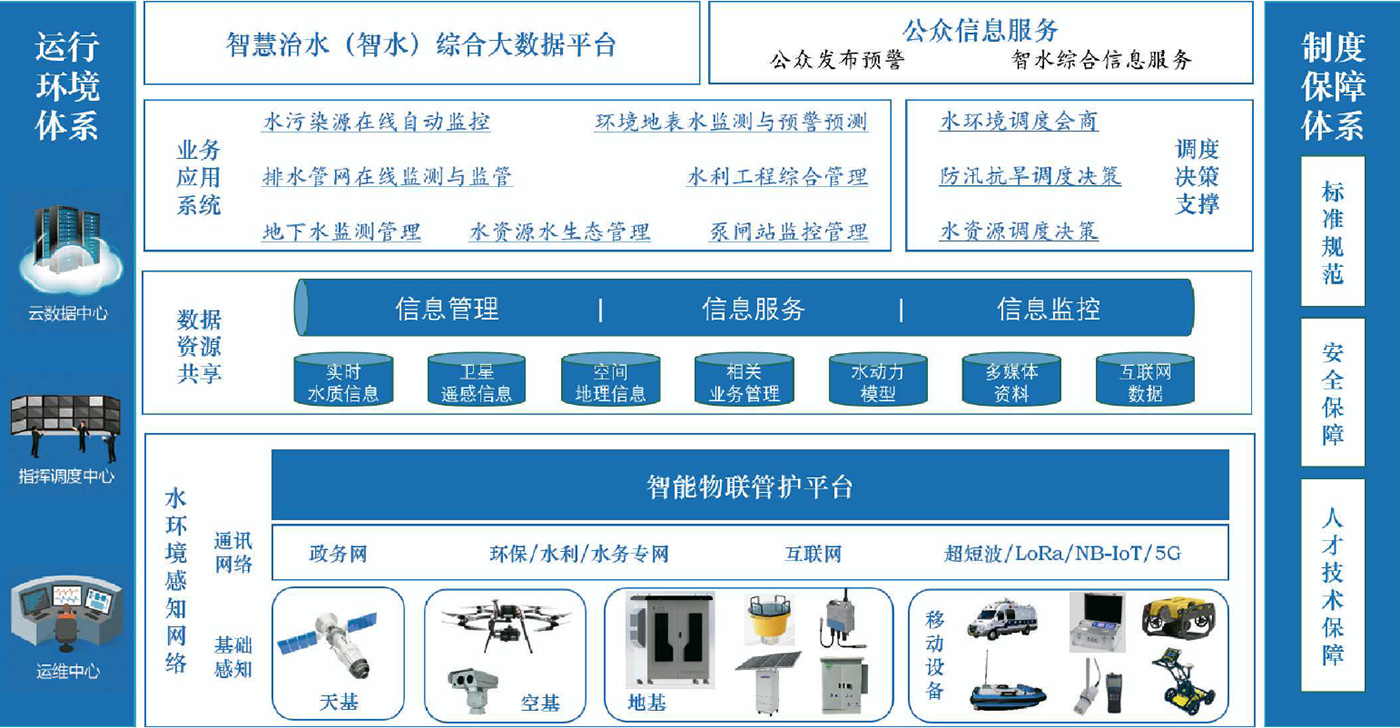Overview of the plan
Utilizing the Internet of Things, cloud computing AI, Big data analysis and algorithm modeling technology comprehensively integrate water management data, including water environment monitoring data, hydrological monitoring data, pump and gate station operation data, drainage network data, etc., build a smart water management big data center, innovate the collaborative closed-loop management mode of water environment business, make water management monitoring, early warning, operation and maintenance, assessment, traceability, and decision-making more effective and accurate, achieve data-driven comprehensive water management intelligence, comprehensively improve water environment management capabilities, serve the improvement of water environment quality and the construction of ecological civilization system.
Scheme composition
Program features
1. Building a 'one map' for comprehensive supervision: integrating water pollution sources, sensitive points, monitoring points, video sources, and management objects into one map. To achieve full control of water pollution sources, full coverage of grid personnel, full staffing of management institutions, full tracking of work conditions, and full quantification of performance evaluation, ensuring that environmental pollution problems have nowhere to hide.
2. Realize full access to the "One Network": In addition to collecting data on pollution sources and environmentally sensitive points, data on the city's river (lake) discharge outlets, black and odorous water bodies, drainage networks, river inspection facilities, pumping stations, etc. are also collected to construct a "One Network" for spatial statistical analysis of water environment, achieving precise water control.
3. Complete "artificial intelligence" full monitoring: Based on artificial intelligence and deep learning technology, model, self learn and identify real-time monitoring data and video data related to water environment, timely discover water environment problems, and achieve 24-hour full monitoring without human supervision.
4. Promote the full linkage of online and offline: online big data monitoring, offline grid personnel supervision, and through the management mode of online and offline linkage, ensure that regional water pollution incidents can be detected and dealt with in a timely manner.




